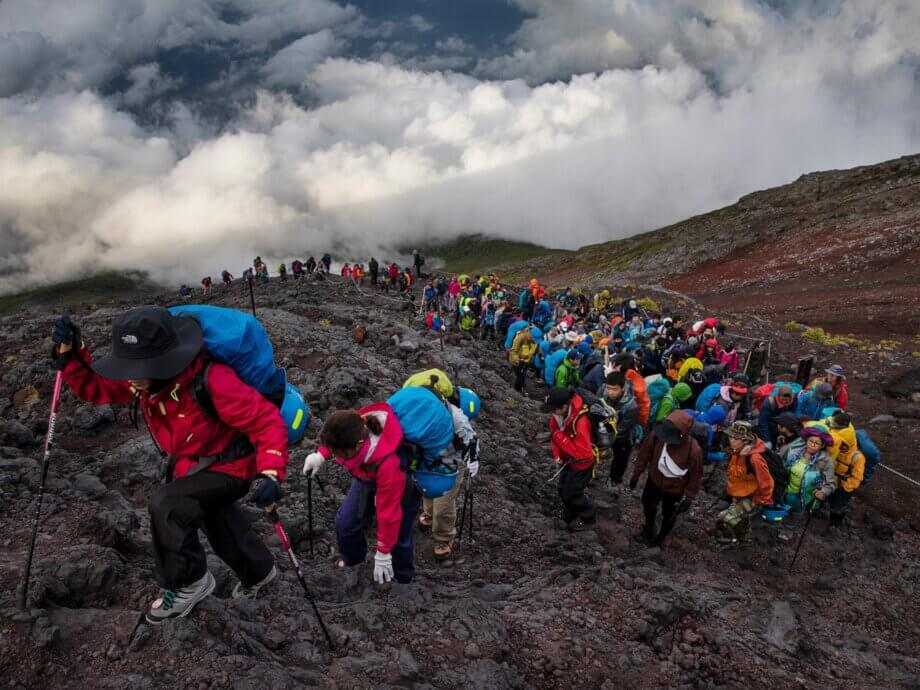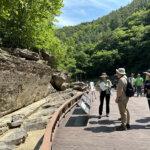Mount Fuji Opens for 2025 Climbing Season: New Fees and Stricter Rules Aim to Protect Japan’s Iconic Peak
Japan’s most famous mountain, Mount Fuji, has officially opened all its climbing trails for the 2025 season, marking a significant shift in how authorities manage the influx of climbers. With new entrance fees, stricter regulations, and a focus on sustainability, this year’s climbing season is set to reshape the experience for both domestic and international adventurers.
- Mount Fuji Opens for 2025 Climbing Season: New Fees and Stricter Rules Aim to Protect Japan’s Iconic Peak
- Why Are New Fees and Restrictions Being Introduced?
- What Are the Main Changes for Climbers?
- Understanding the Environmental and Safety Concerns
- What Is Bullet Climbing and Why Is It Dangerous?
- How Do the New Rules Affect International Tourists?
- What Is the Broader Significance of These Changes?
- Looking Ahead: The Future of Climbing Mount Fuji
- In Summary
Why Are New Fees and Restrictions Being Introduced?
Mount Fuji, standing at 3,776 meters, is not only Japan’s highest peak but also a UNESCO World Cultural Heritage site since 2013. Each year, hundreds of thousands of climbers flock to its slopes, drawn by the promise of breathtaking sunrises and the challenge of summiting a national symbol. However, this popularity has come at a cost: overcrowding, environmental degradation, and safety concerns have prompted local authorities to take action.
For the 2025 season, all three trails on the Shizuoka Prefecture side—Fujinomiya, Gotemba, and Subashiri—now require climbers to pay a 4,000 yen (about $25) entrance fee. The most popular trail, Yoshida, located in neighboring Yamanashi Prefecture, opened earlier on July 1 and has doubled its fee from the previous year to 2,000 yen. These measures are designed to manage the number of climbers, reduce environmental impact, and fund conservation efforts.
What Are the Main Changes for Climbers?
The new regulations go beyond just entrance fees. Both Shizuoka and Yamanashi prefectures have introduced policies to discourage “bullet climbing”—the practice of attempting to reach the summit overnight without resting in a mountain hut. This risky approach has led to numerous accidents and health emergencies in the past, as climbers underestimate the effects of altitude and fatigue.
Access Restrictions and Quotas
On the Yamanashi side, the Yoshida trail now limits climbers to 4,000 per day, a move aimed at easing overcrowding and ensuring a safer, more enjoyable experience. In contrast, the Shizuoka trails do not currently cap the number of climbers, but they have implemented other controls. Access to these trails is now restricted between 2 p.m. and 3 a.m., effectively preventing climbers from starting late in the day and attempting a dangerous overnight ascent.
Additionally, hikers using the Shizuoka trails must complete a course on climbing rules and etiquette, followed by a quiz. This can be done in person or via a smartphone app, ensuring that all climbers are aware of the risks and responsibilities involved in tackling Mount Fuji.
Mountain Hut Reservations Now Essential
Perhaps the most significant change is the requirement for an overnight reservation at a mountain hut. Without proof of a reservation, climbers will be stopped at the 5th station gate and denied access to the summit route. This policy is intended to reduce the number of people attempting to climb without adequate rest, which has been a major factor in past accidents and rescues.
Yuji Asato, a 45-year-old climber from Yokohama, shared his excitement: “I couldn’t climb last year because of a typhoon, but I want to see the sunrise on the mountain and then return home.”
His sentiment reflects the enduring appeal of Mount Fuji, but also the need for careful planning under the new rules.
Understanding the Environmental and Safety Concerns
Mount Fuji’s popularity has led to a range of environmental issues, including littering, trail erosion, and damage to fragile alpine ecosystems. The mountain’s status as a World Heritage site comes with a responsibility to preserve its natural and cultural value for future generations.
Overcrowding has also strained the mountain’s infrastructure, from toilets to emergency services. In recent years, there have been reports of climbers suffering from altitude sickness, hypothermia, and even fatalities due to poor preparation and disregard for safety guidelines.
By introducing entrance fees and stricter controls, local authorities hope to fund better facilities, increase patrols, and educate climbers about responsible behavior. The fees collected are earmarked for trail maintenance, waste management, and environmental conservation projects.
What Is Bullet Climbing and Why Is It Dangerous?
“Bullet climbing” refers to the practice of starting a climb late in the day and pushing through the night to reach the summit by sunrise, without stopping to rest in a mountain hut. While the idea of witnessing the sunrise from the top of Mount Fuji is alluring, this approach is fraught with risks.
Climbers who attempt bullet climbs are more likely to suffer from altitude sickness, exhaustion, and hypothermia. The lack of sleep and exposure to cold temperatures at high altitude can quickly turn a dream adventure into a life-threatening situation. Rescue operations on Mount Fuji are challenging and costly, often requiring specialized teams to operate in difficult conditions.
According to local officials, “Discouraging bullet climbing is essential for the safety of climbers and the preservation of the mountain environment.”
The new rules, including access restrictions and mandatory hut reservations, are designed to make bullet climbing virtually impossible.
How Do the New Rules Affect International Tourists?
Mount Fuji is a major draw for international visitors, many of whom may be unfamiliar with the unique challenges of climbing a high-altitude volcano. The new requirements—entrance fees, mandatory courses, and hut reservations—mean that advance planning is more important than ever.
Tourists are encouraged to research the different trails, book accommodations well in advance, and familiarize themselves with Japanese climbing etiquette. The official Mount Fuji websites and local tourism offices provide information in multiple languages to help visitors prepare for a safe and enjoyable climb.
What Is the Broader Significance of These Changes?
The measures introduced for the 2025 climbing season reflect a growing trend in global tourism: the shift toward sustainability and responsible travel. As iconic destinations like Mount Fuji face increasing pressure from visitor numbers, authorities are rethinking how to balance access with preservation.
By charging entrance fees and limiting numbers, Japan joins other countries in using economic and regulatory tools to protect natural wonders. Similar approaches have been adopted at popular sites such as Machu Picchu in Peru and national parks in the United States.
These changes also highlight the importance of education and community involvement. By requiring climbers to learn about safety and etiquette, local authorities are fostering a culture of respect for both the mountain and fellow adventurers.
Looking Ahead: The Future of Climbing Mount Fuji
As the 2025 season unfolds, authorities will be closely monitoring the impact of the new rules. Success will be measured not just by the number of climbers, but by improvements in safety, environmental conditions, and the overall quality of the climbing experience.
For those planning to climb Mount Fuji, the message is clear: preparation, respect, and responsibility are now as essential as sturdy boots and a sense of adventure. With the right approach, climbers can continue to enjoy the majesty of Japan’s sacred mountain while helping to ensure its preservation for generations to come.
In Summary
- All Mount Fuji trails are open for the 2025 climbing season, with new entrance fees and stricter rules.
- Shizuoka Prefecture now charges a 4,000 yen fee for its three trails and requires climbers to complete a safety course and quiz.
- Yamanashi Prefecture’s Yoshida trail has doubled its fee to 2,000 yen and limits climbers to 4,000 per day.
- Overnight hut reservations are mandatory to prevent dangerous bullet climbing.
- The new measures aim to improve safety, reduce environmental impact, and promote sustainable tourism on Japan’s most iconic mountain.




